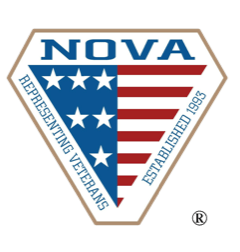VA Releases Final Rule on Standardized Claims and Appeals Forms
Posted by Gregory M. Rada | September 25, 2014 | Disability Compensation
The VA amended its regulations today introducing a uniform disability claims form that VA says will allow it to better service veterans. The new rule goes into effect beginning March 25, 2014, and includes three major changes:
- Requirement that all VA benefits claims (pension, compensation, dependency and indemnity compensation, and monetary burial benefits) be filed on VA’s standardized claims form
- Requirement that all VA compensation appeals (notice of disagreement or NOD) be filed on a standardized NOD form
- Elimination and replacement of the “informal claims process” with a new “intent to file process”
VA’s purpose in implementing these changes “is to improve the quality and timeliness of the processing of veterans’ claims for benefits by standardizing the claims and appeals process through the use of forms.” VA believes that “by requiring data to be formatted in a standard way through the use of forms, VA will be able to cut processing time in identifying and developing claims, which will result in faster delivery of benefits to all veterans.”
While standardized forms may indeed cut down on VA processing time, a veteran who does not file on VA’s standard form will risk their claim or appeal not being recognized by VA. This is an increased burden compared to the current regulations which allow a veteran to file a claim or notice of disagreement on type of paper, in any of manner.
In addition to the new standardized claims and appeals form requirements, the final rule also eliminates the “informal claims process” and introduces of a new “intent to file a claim process.” Beginning March 25, 2015, if a veteran indicates an intent to file a claim, and VA receives a complete application form within 1 year of receipt of the intent to file a claim, VA will consider the complete claim filed as of the date the intent to file a claim was received.
An intent to file a claim can be submitted in one of three ways: (i) an electronically initiated and saved application, (ii) written intent to file a claim, or (iii) oral intent communicated to VA and recorded in writing. The intent to file a claim must identify the general benefit being sought (e.g. compensation, pension, etc.), but need not identify the specific claim or medical condition(s) upon which the claim is based.
While I am hopeful this will help VA’s backlog, I don’t think it will do much. VA’s backlog issues extend far beyond an inability to identify and develop claims due to non-standard forms. Overall, these new regulations just add to the list another reason veterans should consider engaging an attorney early in the claims process. If you have questions about VA’s new standardized forms and filing requirements, call me and let’s talk.
Sources: VA Final Rule – Standard Claims and Appeals Form; VA Press Release







